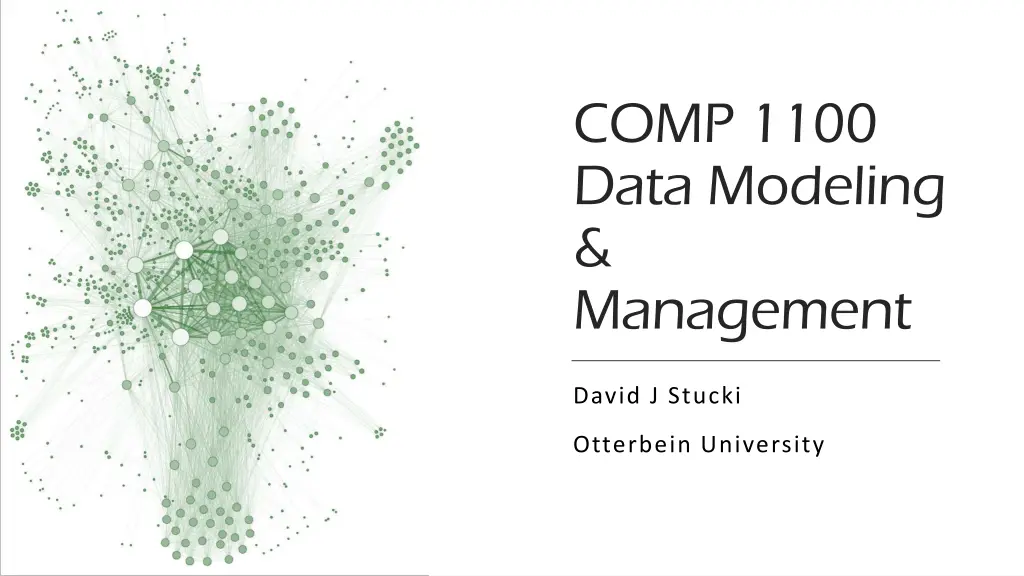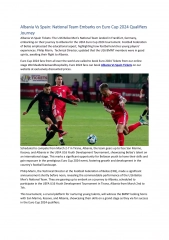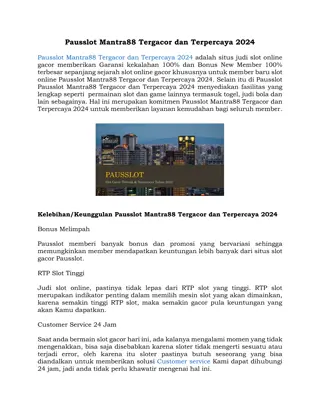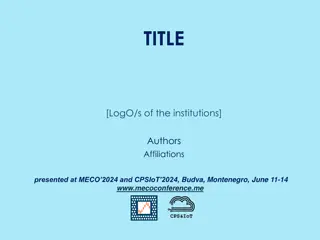
Understanding Data Modeling & Management Concepts in Relational Databases
Learn about fundamental concepts in data modeling and management for relational databases, including the relational model, tuple, attribute, domain, relation schema, and characteristics of relations. Discover how to design and work with relational databases effectively.
Download Presentation

Please find below an Image/Link to download the presentation.
The content on the website is provided AS IS for your information and personal use only. It may not be sold, licensed, or shared on other websites without obtaining consent from the author. If you encounter any issues during the download, it is possible that the publisher has removed the file from their server.
You are allowed to download the files provided on this website for personal or commercial use, subject to the condition that they are used lawfully. All files are the property of their respective owners.
The content on the website is provided AS IS for your information and personal use only. It may not be sold, licensed, or shared on other websites without obtaining consent from the author.
E N D
Presentation Transcript
COMP 1100 Data Modeling & Management David J Stucki Otterbein University
ALERTS ER Diagram HW is due Thursday by the end of class Read Hoberman chapters 7-9
Relational Model Concepts Fundamental concept: the relation The Relational Model represents an entire database as a collection of relations Idea of a relation: A table of values Each row is some collection of facts about an entity Each column is a single attribute about the entities in the table
Relational Model Concepts Tuple one row of a relation Attribute one column of a relation Relation the whole table Domain of an Attribute all the values that attribute can have
Domain All the possible values an attribute can take Atomic Remember your mathematics? Example domains: US Phone Numbers: the set of all 10-digit phone numbers Social Security Numbers: the set of all 9-digit numbers Names: the set of all possible names GPAs: the set of all possible values between 0.0 and 4.0 Data type: a format for a domain US Phone Numbers: (ddd)ddd-dddd GPAs: any real-valued number
Relation Schema Denoted by R(A1, A2, ...,An) Consists of a relation name and a list of attributes Description of what the relation should contain STUDENT relation: STUDENT(Name, SSN, Address, GPA) Can also include data type: STUDENT(Name:String, SSN:Social_Security_Nums, Address: String, GPA: Real) Degree (or arity) of a relation Number of attributes n of its relation schema
Relation A particular set of tuples for a given relation schema (also known as a relation state) Set of n-tuples r = {t1, t2, ..., tm} The state of the relation is its current configuration (i.e. current contents) Each tuple in the set is an ordered list of values Each element of the tuple corresponds to a particular attribute for the relation
Characteristics of Relations Ordering of tuples Relation is a set Sets have no order Relation is not sensitive to ordering of tuples Uniqueness of tuples No duplicate tuples in a relation! Unknown values NULL value used when value can t be known or does not exist Interpretation Relation is an assertion of facts Each tuplecan be thought of as a fact about the world Or as a predicate in first order logic
Characteristics of Relations Order of attributes and values is not that important As long as correspondence between attributes and values maintained Alternative definition of a relation Tuple considered as a set of (<attribute>, <value>) pairs Each pair gives the value of the mapping from an attribute Aito a value vi from dom(Ai) Use the first definition of relation Attributes and the values within tuples are ordered Simpler notation But alternative has application in later formalisms
Characteristics of Relations Values in tuples Each value in a tuple is atomic Flat relational model Composite and multivalued attributes not allowed First normal form assumption Multivalued attributes Must be represented by separate relations Composite attributes Represented only by simple component attributes in basic relational model
Relational Model Constraints A constraint is a restriction on the values in a database state Implicit constraints (model-based constraints) Inherent in the data model itself E.g. no duplicate tuples in a relation Explicit constraints (schema-based constraints) Can be explicitly enforced/expressed in the schema Application-based constraints (business rules) Derived from miniworld represented by database Cannot be explicitly enforced by the schema Must be enforced by application programs themselves
Schema-based constraints Domain constraints Data type constraint Each attribute in a tuple may only take on a value from the domain of that attribute
Schema-based constraints Key constraints Remember each tuple in a relation must be unique No duplicate tuples! This means that no two tuples have the same combination of attributes for all of their attributes Usually there is a subset of attributes that control uniqueness We call this subset a superkey Definition: Let SK be a subset of attributes of the relation R that form a superkey. Then for any two distinct tuples t1 and t2 in a relation state r of R: t1[SK] != t2[SK]
Schema-based constraints Superkeyscan have redundant attributes Ex: {First Name, Last Name, EmployeeID} could be a superkey Don t really need First Name and Last Name to be unique EmployeeID is guaranteed to be unique keys A key is a minimal superkey Remove one attribute from a key and it is no longer a superkey! A key is always a superkey, but not all superkeys are keys There can be more than one key in a relation Ex: {Drivers License} {Student ID} Common to identify one of these keys as as a primary key Primary key uniquely identifies tuples in a relation to other relations and outside applications
Schema-based constraints Constraints can apply not just to single relations We need to be able to talk about constraints that cross relations More Terminology! Relational Database Schema Set of relation schemas S = {R1, R2, ..., Rm} Set of integrity constraints IC Relational Database State Set of relation states for a relational database such that all integrity constraints are satisfied Invalid state state that violates an integrity constraint
Schema-based constraints Entity integrity constraint No primary key can have a NULL value Remember primary key uniquely identifies a tuple! Referential integrity constraint Specified between two relations A tuple in one relation that refers to a tuple in a second relation MUST refer to an existing tuple You can t put in placeholder references every reference must be resolvable when you make the reference Uses the concept of a foreign key
Schema-based constraints Where do referential integrity constraints come from? Connections in the data
Other constraints Semantic integrity constraints Constraints that come from outside the basic relationships between tuples Business rules no employee can have a salary larger than their supervisor no employee can log more than 60 hours of time in a week Usually modeled at the application level, but sometimes can be modeled in the database Triggers when event X occurs perform action Y Assertions make sure that no matter what action X does, condition Y is always true
Operations The relational model has two types of operations: Retrievals Getting information out of the database Updates Adding/changing information in the database Different kinds of updates: INSERT Add new tuple to a relation DELETE Remove a tuple from a relation UPDATE Change an attribute value in a tuple in a relation
Updates & Constraints The DBMS must make sure that updates are not allowed to violate integrity constraints Check to make sure that attributes in an INSERT do not violate constraints DELETE can cause referential constraint violations Removing a tuple being referred to by another tuple UPDATE can cause referential constraint violations Changing a primary key can cause all sorts of referential problems for any tuple referring to the updated tuple Changing a foreign key can only happen if the tuple the foreign key refers to already exists
Mapping ER Models to Relational Models Next Time






















